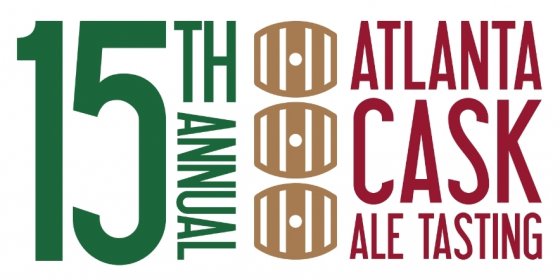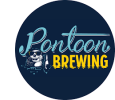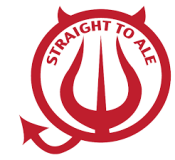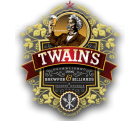While Oregon and Washington, Colorado, Maine or California
amongst others saw explosive craft brewery growth, the Southeastern states
seemed trapped in light lager culture and a persistent prohibitionist mindset.
Beer remained stuck at sports bars and tailgating parties.
Now, a vibrant beer world flourishes in the Southeast.
World-class imports, locally-produced microbrews and specialty brews from the
rest of the country have achieved unprecedented popularity in the region.
Southerners are realizing that beer can be a varied and vibrant part of meals,
social gatherings and life as a whole.
The Bad Old Days
The South’s love affair with robust, old-world beer styles
is a relatively new trend that trails other regions of the country. There was a
long, bland beer legacy to overcome.
The bad old days of southern beer were pretty bad. The
smattering of southern breweries in the 1800s could not begin to compare to the
hundreds found in northern parts of the country. German immigrants who founded
the early breweries of the Northeast and Midwest never settled in the South in
any great numbers, and the oppressive heat of the lower states made beer
production extremely difficult.
The modest group of southeastern breweries that existed in
the early part of the twentieth century was completely squashed by Prohibition
and the Great Depression, and grain rationing during World War II drove many
post-Prohibition breweries out of business.
Religion has also exerted a restraining influence on beer in
the south. In his book, Liquor in the Land of the Lost Cause: Southern White
Evangelicals and the Prohibition Movement, Samford University professor John L.
Coker explains that prohibitionist sentiment was not popular in the South before
the Civil War because the temperance movement was associated with the northern
anti-slavery movement. After the Civil War, however, southern Protestant
leaders reinterpreted the ideals of temperance and prohibition to be compatible
with southern culture. By 1915, alcohol had been officially forbidden by most
southern churches.
This Protestant holy war against alcohol never occurred in
the Catholic state of Louisiana, which explains many of the state’s liberal
alcohol laws. Prohibition, however, was a different matter. Wolfram Koehler,
owner/brewmaster of New Orleans’ Crescent City Brewhouse, reflects, “New
Orleans, with 22 operating breweries at the turn of the 20th century, was truly
a brewing capitol of the South, but almost all were lost due to Prohibition.
When I arrived here in the 1980s, Dixie was the only surviving brewery in the
Big Easy. When we began Crescent City Brewhouse in January of 1991, this was
the city’s first brewery opening in over 70 years.”
Besides the sultry climate and an oppressive church, what
other factors held beer back? State laws did not help matters. Microbreweries
and brewpubs were illegal in most southern states from Prohibition right up
until ten to twenty years ago. And a lack of any ingrained brewing tradition in
the South allowed the big national brands to completely dominate the region
after Prohibition.
Ironically, even though most southern states outlawed high
alcohol beers in the past, strong spirits have always been a staple of imbibing
southerners. Whereas barley and hops were scarce in the South, corn and other
grains used in the production of distilled spirits have always been readily
available. Moonshine was in wide, albeit illegal, production over the past 150
years—especially during Prohibition. It was much easier to hide a still than a
brewery, and a small volume of spirits was easier to produce and transport than
a much larger volume of beer. Spirits weren’t filling in the heat of the summer
and were easier to carry in small flasks to conceal from religious folk.
Locally distilled beverages reigned supreme in those days, and the South simply
lost whatever taste it had for beer.
Another reason the South trailed other parts of the United
States in beer appreciation may have something to do with its early population.
Affluent intellectuals settled the Northeast, European immigrants with strong
beer backgrounds gathered in the Midwest and adventurous risk-takers made their
way to the Northwest. Farmers, laborers and many individuals on the run from
the law populated the old South.
Low incomes, long hours of hard work and a conservative,
stubbornly traditional nature seemed to help solidify the cheaper light lager
preferences of many “old school” southerners. Scott Maitland of the Top of the
Hill Restaurant & Brewery in Chapel Hill, NC adds, “Craft beer is more of a
white collar thing, at least in the beginning, and the South has only recently
started a transformation from an agriculture-based economy to an informational
one.”
Southern Beer Pioneers
In the early 1990s, southern beer culture began to move. An
economic boom in the region provided disposable income for people to travel and
sample new beers from Europe and other regions of the United States. Many
larger cities in the South experienced construction and business growth that
brought new jobs and an influx from other areas of the country. People
encountered exciting new flavors in wine, coffee and cuisine—a natural
progression toward an interest in craft beers.
Glen Sprouse, brewer for 5 Seasons brewpub in Atlanta, has
his theory about southern beer drinkers. “I see a combination of three beer
subcultures in the South: rigid individuals who stick to the old southern
drinking traditions of very light beers, another diverse group who wants to broaden
horizons and move on to craft products, and people from outside the South who
live here now and have brought beer preferences with them from other areas. The
latter two groups have really driven the beer revolution in the South.”
Southern “beer geeks” emerged to lead the charge to change
laws that limited the sorts of beers available. Homebrewing was legalized in
several states in the 1990s, and the hobby nurtured many of the region’s
current commercial brewers.
Grassroots efforts of beer devotees also led to the
legalization of brewpubs and microbreweries in every state from Louisiana to
North Carolina. Restrictive alcohol limits on beer, usually at 6% ABV (alcohol
by volume), have been lifted in all but Alabama and Mississippi. The effort
took seven years in Georgia, where beer connoisseurs got the law changed in
2004. North Carolina’s Pop The Cap pushed the change through in 2005. A similar
campaign succeeded in South Carolina in 2007, while the Free the Hops movement
is still struggling to make headway in Alabama.
Southern beer culture benefited from the efforts of many
brewing pioneers in the late ‘80s and early ‘90s. Uli Bennewitz emigrated to
Manteo, NC in 1980. He missed the rich German lagers of his homeland and
decided to try his hand at opening a German-style brewery and restaurant. He
discovered brewpubs were illegal in the state of North Carolina—worse still,
Manteo was in a dry county. Bennewitz immediately began lobbying efforts to
change the laws in the state. His campaign succeeded in 1985, and he opened the
Weeping Radish brewpub in Manteo in 1986.
Bennewitz is extremely proud of bringing German beer
traditions to the region: “In 21 years we’ve never served any other beers but
our own, and this has worked well for us. We can’t emulate the big boys—we must
stick to a local marking and keep our company’s personality.” In keeping with
this line of thinking, Weeping Radish has recently opened a new farm brewery on
24 acres of land in Currituck County about 30 miles from Manteo. Unfiltered beers
for both locations will be produced here, along with homegrown veggies. The
farm also boasts a 5,000 square-foot butcher shop and smokehouse where a master
butcher from Germany crafts artisan sausages and meats.
Abita Brewing Co. just celebrated 20 years of beer
production at their microbrewery in Louisiana. In the ‘90s, the company even
added a separate brewpub restaurant just down in road. Abita president David
Blossman says, “Anybody who thinks the South doesn’t appreciate craft beer
needs to come and take a tour of the Abita Brewery. We’re running at full
capacity and starting a five million dollar construction project to expand the
brewery. As the number one craft brewer in the Southeast, we feel very
appreciated.”
In the nineties, Nashville saw the opening of two of the
country’s most respected brewpubs. Chuck Skypeck’s Boscos and Dave Miller’s
Blackstone Restaurant & Brewery have been extraordinarily innovative in
terms of their house beers and menu items. Cask-conditioned ales and special
beer tastings are a staple at each brewpub, and Skypeck even produces Flaming
Stone Beer, one of the only American beers in the German steinbier tradition,
made with hot rocks from Boscos’ pizza oven.
Atlanta’s first post-Prohibition microbrewery was known as
“Marthasville” (also the original name for the city). Marthasville lasted for
only a few years, but was successful in showing the metropolitan area that a
small company could produce flavorful and distinctive beers. Atlanta Brewing
Co. started producing Red Brick Ale in 1993 and quickly filled the niche
vacated by Marthasville. Atlanta’s director of marketing, Grey Martin, says,
“Atlanta Brewing made a conscious decision to eschew the hippie aesthetic, so
popular on labels out west, and give our packaging kind of an old school
breweriana look. You don’t need to belong to a particular demographic to drink
and enjoy our beer.”
Highland Brewing Co. is noteworthy as the first commercial
brewery in Asheville, NC, now the state’s most sophisticated beer town. The
company is named in honor of the Scottish and Irish immigrants who initially
settled this area of the state, and its ales have helped foster a taste for
UK-style beers in the region. “Highland has nurtured the local market with as
much community presence as possible. Our Gaelic Ale, Kashmir IPA, Oatmeal
Porter and other brews have made believers of a previously skeptical public,”
says owner Oscar Wong.
Northern Florida had its craft beer indoctrination in 1987
when McGuire’s Irish Pub of Pensacola installed a brewhouse and began cranking
out its line of five regular ales and a rotating seasonal. Despite being told
that dark or hoppy beers would not be appreciated in Florida, the brewers
pushed on with true English and Irish-style beers that have ended up being a
hit. “We are rocking at McGuire’s—packed all the time and selling all the beer
we can make. We have a good clientele of regulars and beer tourists who seek us
out, so we are proof that brewing good beer in the Southeast works,” says Gary
Essex, brewer at the Destin location.
Spreading the Word
The new players of the southeastern beer culture include a
variety of energetic brewer-evangelists spreading the love of craft beer
throughout the region.
Crawford Moran, the founder of defunct Dogwood Brewing Co.,
is the co-owner and brewer for 5 Seasons brewpub in Alpharetta, GA. “The key to
growing our beer culture is continuing education about craft beer,” he says.
“We must keep educating consumers, wait staff, restaurateurs and especially the
politicians. I brew a vast array of styles, we do a unique cask ale every week,
we always have a high gravity beer on tap and we’re aging beers on site in
whiskey barrels. The advantage of a brewpub in the education area is that I get
to interact directly with our customers.”
Locally-owned brewpubs that drip with southern ambience and
hospitality are the first place that many southern folk get to sample their
first craft beers.
“In the early 1990s, the concept of a brewpub seemed really
outrageous to a lot of people. Now brewpubs are a commonplace, accepted locale
to enjoy good food and fresh beers,” says Jordan Fleetwood, brewer for Twain’s
Billiards and Tap brewpub in Decatur, GA. “Twain’s was established as a great
beer bar and then grew into the brewpub arena. It was a natural progression for
us, and our customers have really been supportive.”
Scott Maitland’s experience with his Chapel Hill brewpub
leads him to concur. “When Top of the Hill opened ten years ago, people didn’t
understand the concept of local breweries or the fact that beer was something
different than Bud, Miller and Coors. A typical exchange at the bar went like
this: ‘Hi. I’d like a Bud Light.’ ‘Sir, we are a microbrewery and we only sell
the beers that we make.’ ‘OK, how about a Miller Lite?’ This has completely
changed now. We educated the college crowd, and because of the great economy
now in our state, these young people have stayed here and are demanding craft
beer. I think brewpubs don’t get enough respect for creating a grassroots-level
of appreciation for craft beer.”
The founders of Atlanta’s Sweetwater Brewing Co. met while
attending the University of Colorado in Boulder in the early 1990s and worked
together for a time at Rockies Brewing Co. (when they weren’t hiking, fishing
and river rafting). The two free spirits visited Georgia around the time of the
1996 Olympics and saw Atlanta as a city in desperate need of another
microbrewery. Sweetwater’s motto is “Don’t Float the Mainstream,” and the
company has grown into a craft beer leader in the Southeast by producing West
Coast and U.K.-style ales. Their immensely popular Sweetwater 420 outsells
Samuel Adams Light and Shiner Bock in the Atlanta area and is the most popular
craft beer in the state of Georgia.
The struggle for great beer is most arduous in the states of
Alabama and Mississippi. Alabama does have two fine brewpub standouts:
Montgomery Brewing Co. and Old Auburn Ale House. Lazy Magnolia is Mississippi’s
lone brewery, and brewer Leslie Henderson is well aware of the difficult road
ahead in running a brewery in the state. “We knew that this is ‘Bud Country,’
and that natives in southern Mississippi won’t tolerate being told that they
need to catch up with the Yanks,” says Henderson. “Instead, we started making
beers that use local ingredients (pecans, sweet potatoes and locally produced
honey) with flavors designed to pair with the amazing food we have down here.
In doing this, we’re adding to the overall culture of the South, not trying to
introduce some alien beer culture.”
Creating National Recognition
Linus Hall and his wife Lila started Nashville’s Yazoo
Brewing Co. in 2003. Linus was a homebrewer who got his professional start
working at Brooklyn Brewing Co. After relocating to Nashville, Linus decided to
open his own microbrewery in the old Marathon automobile factory near downtown.
Yazoo’s beers have become a vital and respected part of Nashville’s beer
culture, and the hefeweizen brought home a gold medal from the 2004 Great
American Beer Festival.
As to why the beer culture in the South may trail other
areas of the country, Linus offers, “Based on the success of many new breweries
popping up in the South, I think that southerners do have the taste to
appreciate rich flavors of a well-made beer. Look at our food—spicy, rich,
barbecued, smoked—much more adventuresome than the fare in some parts of the
country where craft beer took off in the beginning. I think with our
ever-expanding food culture, the rest of the country better look out, because
the South will one day lead the way in craft beer sales!”
John Cochran and Brian “Spike” Buckowski started their
Athens, GA-based Terrapin Beer Co. in 2002, contract brewing their unique Rye
Pale Ale out of Dogwood Brewing in Atlanta. The crisp, refreshing pale ale
later went on to beat out 92 other pale ales to win a gold medal at the 2002
Great American Beer Festival. Terrapin is known for using non-traditional
ingredients such as rye and coffee and for helping create new styles such as
their hoppy India Brown Ale, a cross between a traditional brown ale and an
IPA. The company also produces four seasonal “monster beers” that are all over
8%. Terrapin’s beer portfolio, probably one of the most unusual in the
Southeast, has enabled the company to begin construction this year of their
very own brewery in a 45,000 square-foot warehouse located just outside
downtown Athens.
John Stuart of Green Man Brewing believes that the South
really has not created its own unique beer styles. His progressive town of
Asheville, NC has weather very similar to some parts of the U.K., and this is
why Stuart thinks that traditional, British-style ales are so popular there.
Green Man has been so successful with their line of pale ale, ESB, IPA and
porter, that they have opened a new microbrewing facility and tasting room just
down the street from their Jack of the Wood pub (home of their original
brewpub). Stuart remarks, “Tasters who visit our microbrewery are very appreciative
of our ales, and no one asks for a light lager.”
Paul Philippon of the Duck-Rabbit Craft Brewery in
Farmville, NC rejects the stereotype that beer drinkers in the Southeast only
want light bodied beer. “We produce full flavored, full-bodied dark beers.
Regional differences make things a lot more interesting than homogeneity, and I
hope that Duck-Rabbit can make a positive contribution to the range of beer
styles and beer flavors available in the Southeast.”
Great Beer Pubs Make a Difference
The important influence of prominent beer pubs in the region
should not be discounted. Bars like Bulldog Pub in New Orleans, Barley’s Pizza
in Asheville, and Georgia’s Brick Store in Decatur and Summits Wayside Taverns
in Snellville and Cumming serve a staggering array of well-cared-for draft and
bottled beers from around the world. Summits’ owner Andy Klubock says, “Our
store in Cumming has over 200 different tap lines and as many bottled
beers…more than any other place in the country, in our opinion. I think Summits
does a good job of introducing new styles to Georgia and allowing customers to
continually try new things.”
Many look at Brick Store as one of the most impressive beer
bars in the entire country. Dave Blanchard, Mike Gallagher and Tom Moore started
the pub in 1997 in a beautiful, historic building on the main courthouse
square. The best craft beers available at the time from the region, nation and
world were served in proper glassware by friendly, well-trained staff. In 2004,
House Bill 645 brought an end to Georgia’s 6% ABV law and allowed beers up to
14% to be sold in the state. This spurred Brick Store to open an impressive,
Belgian-themed bar upstairs from the original pub. Blanchard explains, “Our
relationship with importers and breweries allows us to offer beers that
customers will find almost nowhere else in the state. What’s really encouraging
is that people visit the Brick Store from areas of the Northwest or Northeast
and say that our pub is better than many of the places in those areas.”
Brick Store’s Mike Gallagher adds, “We get to be creative
here in the Southeast. If our pub were located in Portland, Philadelphia or New
York, people would be looking to see how we fit in with the established beer
culture or what we are doing that’s different. Here, we are helping create the
beer culture and set new trends. After we opened and made a success of the
place, people admitted to us that they had some big doubts about whether or not
we could make the pub work here. They were polite southerners all along the
way, but many admitted that they were amazed that we have done so well in a
region of the country that has been dominated for so long by light lagers.”
A few obstacles still remain in the journey toward beer
enlightenment in the South. Michael Bryant of Dunedin (a pioneering brewery in
Tampa) and Kevin Rusk of Titanic Brewery & Restaurant in Miami remain very
frustrated by the legal landscape in Florida. Rusk sums up their opinions:
“Florida legislators, along with their friends who own Busch Gardens, have
purposely manipulated the state’s laws to keep out many craft brewers. Up until
2005, the state also banned any bottle that was not a domestic size, allowing
only 8-, 12-, 16- and 32-ounce bottles. This prohibited many fine beers from
being sold in the state.”
After a few legal victories favoring craft beer in the past
several years, the Georgia Department of Revenue alcohol division has decided
to enforce brewery laws that have been basically ignored for years. Breweries
are now being fined for bringing beer samples to festivals, telling retail
customers where to purchase their beers or doing pint nights at bars. It is
still illegal to purchase beer directly from a microbrewery or take home a
growler of beer from a brewpub.
Danner Kline’s Free the Hops campaign keeps fighting to
raise the beer alcohol limits in Alabama. Kline communicates both frustration
and hope when he says, “Influence from the religious right is crippling.
Alabama is still overrun with neo-prohibitionists stigmatizing alcohol at every
opportunity, portraying alcohol as the ‘Great Satan’ killing children and
breaking up families. All of this is detrimental to a culture that appreciates
fine alcoholic beverages. I am envious of cities that have a wide variety of
breweries when the entire state of Alabama only has one bottling brewery,
recently destroyed by fire. The South still has a long way to go, but I think
many years from now we’ll have a well-developed beer culture that will not be a
carbon copy of the Northwest or Northeast.”
On the whole, beer culture in the South has made remarkable
gains in the last 15 years. Rather than viewing the South as lagging behind,
many craft brewers now see the region as a land of promise and possibilities.
Several breweries in other parts of the country have capitalized on this
demand: Ommegang, Oskar Blues, Great Divide, Dogfish Head and Victory are all
amazed at the massive volume of beer that they have sold in Georgia alone.
As beer drinkers in the Southeast become more educated and
experimental in regard to robust beer styles, the region will offer new
horizons and an ever-expanding market for these beers.
Spike Buckowski, brewer for Terrapin in Georgia, sums it up
by saying,” I feel that the beer culture in the Southeast is evolving into
something very special. It’s really nice to have a wide open market down here
and introduce people to creative and flavorful beer styles. To tell the truth,
many southeastern craft brewers are producing beers that are still over the heads
of many beer drinkers here. In a lot of ways, I kind of like that.”





















 Akademia Noctua Chaos Erebus
Akademia Noctua Chaos Erebus Bearded Iris Breaking Atoms
Bearded Iris Breaking Atoms Contrast Artisan Ales Luminiferous IPA
Contrast Artisan Ales Luminiferous IPA Hopstix West of Java
Hopstix West of Java Pontoon Snozzberries: Dragon Fruit Edition
Pontoon Snozzberries: Dragon Fruit Edition Straight to Ale Datin' the Devil & Raisin' Hell
Straight to Ale Datin' the Devil & Raisin' Hell Twain's Older & Weizer
Twain's Older & Weizer